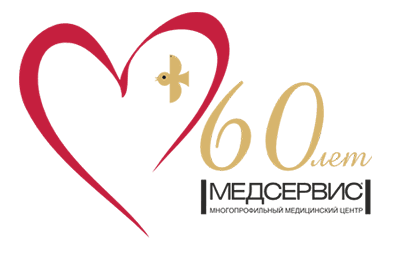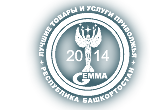Uterine artery embolization
Uterine leiomyomas, or fibroids, are one of the most common diseases of female genital tract. Fibroids are most common in women aged from 30 to 40 years, but they can occur at any age.
The most common (60-90% of cases) uterine fibroids treatment is surgery (surgical removal of the fibroids or the entire uterus). Currently the development of medicine allows to successfully treat the disease not only keeping the uterus, but also carrying out the treatment of minimally invasive techniques under local anesthesia.
Uterine fibroids are benign tumors formed as a result of proliferation of the myometrium around the thin-walled vessels. Externally fibroids represent rounded tumors whose size can range from 1 to 20-30cm in diameter. Fibroids can be formed under the mucous membrane of the uterus (submucosal form), in the middle muscle layer of the uterus (intramural form) or on the surface of the uterus in the peritoneum (subserous form).
Causes:
The exact cause of uterine fibroids is unknown. Nevertheless, there is a clear link between the disease and level of the female hormone estrogen.
Symptoms:
Clinically uterine fibroids in 30% of cases are asymptomatic (small-sized tumors).
Fibroids may have the following symptoms:
1) Changes in menstruation:
- prolonged, more frequent, or heavy menstrual periods;
- menstrual pain (cramps);
- vaginal bleeding at times other than menstruation;
- anemia (due to blood loss).
2) Pain:
- in the abdomen or lower back (often dull, heavy and aching, but it may be sharp);
- during sex.
3) Pressure:
- difficult urination or frequent urination;
- constipation, rectal pain, or difficult bowel movements;
- abdominal cramps.
4) Enlarged uterus and abdomen.
5) Miscarriages.
6) Infertility.
Fibroids also may cause no symptoms at all. Fibroids may be found during a routine pelvic exam or during tests for other problems.
Effects:
Abnormal blood loss leading to anemia, which undermines the immune system, causing fatigue, weakness, and contributing to the development of other diseases. Fibroids have large negative effect on the pelvic organs; at any size fibroids can cause infertility. In some cases of larger fibroids a hysterectomy can be required.
History:
Uterine artery embolization (UAE) has been successfully used for the treatment of uterine fibroids since 90-ies of XX century (for the first time it was applied in France for the treatment of uterine fibroids). It is by far the most minimally traumatic method of surgical treatment. In 1998 the UAE was approved as a method authorized for use in Russia by order of the Ministry of Health of the Russian Federation. UAE is widely applied in the world, what is easy to see in the Internet. Primarily UAE is actively used in countries with well-developed medicine such as USA, Canada, UK, Germany, France, Netherlands, Spain, Israel, Japan, although it is applied in all the countries of the world, where UAE is included in the guidelines. It is important to note that the doctor should provide the patient with objective information about all possible treatment options. If the doctor himself is not trained in any kind of treatment, the information from him about this procedure can be nonobjective. The patient should try to obtain information about each method directly from the experts skillful in this method of treatment. After that, the patient decides on the treatment option on the basis of all the objective information.
Development of the UAE in Russia is constrained by a small number of costly angiographic equipment and a small number of experienced endovascular specialists, performing UAE. Endovascular specialists (radiologists) have high skills in vascular surgery and extensive experience of work with complex angiographic equipment. Endovascular specialists perform a wide variety of endovascular interventions on the vessels of the heart, brain, other organs and extremities. UAE is just one of many endovascular interventions.
The technique of uterine artery embolization:
The procedure is performed under local anesthesia through a small puncture of an extremity artery. Tiny particles (about the size of sand grains) are injected into the blood vessels that lead to the uterus. The particles cut off the blood flow to the fibroid and cause it to shrink. UAE can be performed as an outpatient procedure in most cases.
Clinical effects:
Uterine fibroid embolization reduces the size of fibroids to about 40-75% on average and reduces the deformation of the uterine cavity.
Approximately 90-98% of women treated with UAE for uterine fibroids report that their symptoms have improved (menstrual blood loss has been reduced, pain and intermenstrual bleeding have disappeared).
If fibroids are initially of a very large size, after uterine artery embolization (and significant size reduction) they can be removed by laparoscopy technologies if necessary. After the fibroids arteries are blocked, the risk of bleeding during myomectomy is minimized.
Advantages of uterine artery embolization:
Uterine fibroid embolization, done under local anesthesia, is much less invasive than open or laparoscopic surgery to remove individual uterine fibroids (myomectomy) or the whole uterus (hysterectomy).
No surgical incision is needed – only a small nick in the skin that does not have to be stitched closed.
Patients ordinarily can resume their usual activities much earlier than if they had surgery to treat their fibroids.
As compared to surgery, general anesthesia is not required and the recovery time is much shorter, with virtually no blood loss.
Follow-up studies have shown that nearly 90 percent of women who have their fibroids treated by uterine fibroid embolization experience either significant or complete resolution of their fibroid-related symptoms. This is true both for women who have heavy bleeding as well as those who have bulk-related symptoms including urinary frequency, pelvic pain or pressure. On average, fibroids will shrink to half their original volume. More importantly, they soften after embolization and no longer exert pressure on the adjacent pelvic organs.
Follow-up studies over several years have shown that it is rare for treated fibroids to regrow or for new fibroids to develop after uterine fibroid embolization. This is because all fibroids present in the uterus, even early-stage nodules that may be too small to see on imaging exams, are treated during the procedure. Uterine fibroid embolization is a more permanent solution than the option of hormonal therapy, because when hormonal treatment is stopped the fibroid tumors usually grow back.
Advantages of uterine artery embolization in the Medical center “Medservice”:
• Radiologist performing UAE in medical center “Medservice” has been working with this technology since 2003.
• UAE is performed in the clinic through radial artery (through the puncture on the wrist), the most advanced and secure access. Therefore bed rest is not required, risk of bleeding from the puncture site and other local complications are almost completely eliminated. Radial access is the most advanced one. So far, it is very rarely used by interventional radiologists for performing UAE. Traditional access in most hospitals is femoral one (through the puncture of artery in the groin).
• The clinic is a private medical hospital, therefore only high-technology embolization agents are used there.
• UAE is performed using Philips Allura Xper FD20 (Netherlands), the most modern angiographic equipment. New digital image processing system allows to significantly improve image sharpness without increasing the radiation and to see the smallest vascular structures. The latest-generation X-ray tube minimizes radiation exposure to the patient.
Should you have any questions related to angiography and endovascular intervention, please contact us:
Tel .: +7 (3476) 39-52-38, e-mail. : 402iag@salavatmed.ru
Dr. Andrey Ivanov, Head of Endovascular Department, interventional cardiologist and radiologist, doctor of the highest qualification category in the national endovascular specialty.






